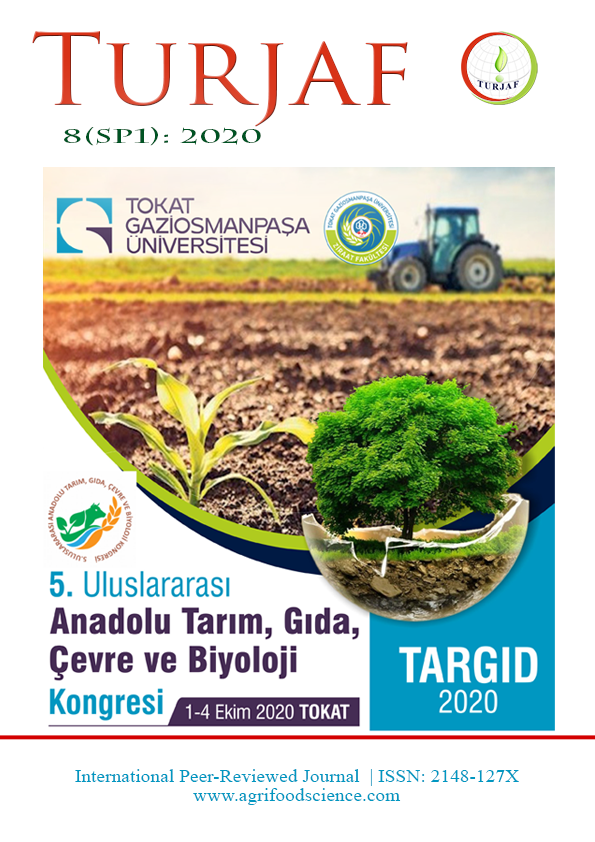Effects of Long Term Conservative and Conventional Tillage Systems on Beta Glucosidase Enzyme Activity and Potential Mineralizable Nitrogen
DOI:
https://doi.org/10.24925/turjaf.v8isp1.131-138.4058Keywords:
Reduced tillage, Zero tillage, Soil quality, Conventional tillage, Biochemical indicatorsAbstract
In this study, the effects of two traditional, three reduced and a zero tillage methods applied for nine years on GEA and PMN were determined and compared. The study, initiated in 2006 as randomized block design, includes a total of 18 plots with 3 replications for 6 different soil tillage systems. In the study, six different soil tillage methods are applied, namely conventional tillage with stubbles (CT-1), conventional tillage with stubbles burned (CT-2), reduced tillage with heavy disc harrow (RT-1), reduced tillage with rototiller (RT-2), reduced tillage with heavy disc harrow (RT-3) and no tillage (NT). Winter wheat was grown as the main crop every year or corn and soybean was grown following the harvest of wheat (second crop) every other year. Differentiation of tillage systems led to a significant variation in GEA and PMN concentrations. The GEA concentration, which increased significantly with the decrease in tillage density, varied between 44.68 mg PNP kg-1 h-1 (CT-2) and 207.66 mg PNP kg-1 h-1 (STI). However, the trend determined in GEA could not be detected in PMN. Although PMN concentration was significantly higher in soils under NT, it was included in the same statistical group with RT-1 for PMN concentrations. Higher PMN concentration in no till soils can be possibly related to the non-disturbance of soil structure. The results of study revealed that reduced and no tillage systems are extremely necessary to increase the quality of soils in the region.Downloads
Published
13.12.2020
How to Cite
Günal, H., & Çelik, İsmail. (2020). Effects of Long Term Conservative and Conventional Tillage Systems on Beta Glucosidase Enzyme Activity and Potential Mineralizable Nitrogen. Turkish Journal of Agriculture - Food Science and Technology, 8(sp1), 131–138. https://doi.org/10.24925/turjaf.v8isp1.131-138.4058
Issue
Section
Research Paper
License
This work is licensed under a Creative Commons Attribution-NonCommercial 4.0 International License.









